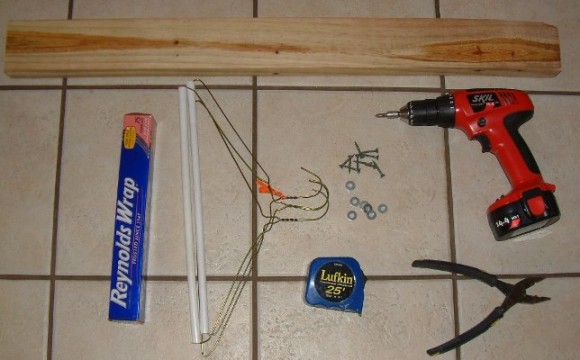Improve Your TV Viewing With This 30-Minute Antenna Project For Free HDTV Broadcasts
I recently bit the bullet and bought a TV. Nothing extravagant, just a 28″ Hannspree LCD with enough resolution to allow it to double as a second computer monitor (and it does so nicely). But after years of using a Mac Mini, 19″ monitor, and a Netflix account, I actually have a TV that has the cable/antenna inputs and a tuner built in.
However, I’m still not ready to get a cable subscription. Even doing television shows as my job, I want to explore other options first. Netflix still reigns king in my living room, but after plugging into a dormant coaxial cable line, I discovered that I’m pulling in about 40 stations of digital HDTV Over The Air (OTA), all broadcasting with clarity that I’ve hardly seen on a screen before. It’s amazing how well Cox/TimeWarner/DirectTV etc have done at making cable/dish seem to be the only options for television viewing.
The OTA transmissions are much more advanced than the analog television I’d watch as a kid – each channel transmits a substantial amount of info that displays nicely in the upper left corner of the screen. Channel name, show name, signal strength and more. Channels are multi-cast, meaning there’s a primary transmisison and three sub-transmissions (like a dedicated NBC weather broadcast on channel 7-3). And I know I mentioned the clarity, but just in case you missed it: the clarity is shocking.
One thing I’ve noticed since my initial auto-channel scan is that a few of the channels I’m watching have come and gone, and even with the clarity, the signal strength isn’t that stellar (I’m averaging around 22%). All this got me thinking about a chat that I had with Robert Cole a few months ago in Knoxville, who had just built his own antenna setup and blogged about it. Revisiting that blog post, I’ve just found my next DIY project.
(EDIT: my antenna is now complete, and works awesome – 89 channels over the air, as shown by my autoscan)

From Robert’s writeup, here’s what’s needed to get started:
(1) 300-ohm to 75-ohm balun ($1.99 at Amazon, or get it at RadioShack or Ace)
(8) metal coat hangers
(1) 2?x4? at least a couple feet long
(1) piece of plywood
(10) washers
(10) screws
A few feet of Romex or other copper wire
Some tinfoil
The build is pretty straightforward:
- The coat hangers are cut and bent into six or eight “V” shaped pieces, with 7 inch legs.
- Any paint/coating at the center (where the bend occurs) is removed with sandpaper or a few taps of the dremel’s grinding disc.
- The bent coat hanger V’s are screwed into the 2×4, spaced evenly. Use washers to help clamp them in place.
- Copper wire is used to connect the screws in a downward zig-zag pattern, taking care to separate and insulate them where they cross over each other.
- The two lines of copper wire should terminate in the center, where the balun is connected
- If a reflector is needed (increases sensitivity but makes positioning much more important), a small piece of plywood can be covered with aluminum foil and mounted to the back side of the 2×4. Make sure the V’s are all parallel to the board, at a consistent distance.
Mount it in your attic, connect it to the coaxial cable and plug this into your TV. Voila! Strong HDTV signals, high-def TV over the air.
Here’s an outdoor version of the same design, using PVC to keep things weather-proof.
This is a popular build, and there are a lot of resources available online to build this. More information here:
- How to build a HDTV Antenna….CHEAP!
- Another antenna build how-to page
- Getting High-Definition TV Over the Air (OTA)
- HDTV Primer’s Antenna Basics
And, a handy video on making perfectly straight antenna leads from copper wire (not for coathangers)

